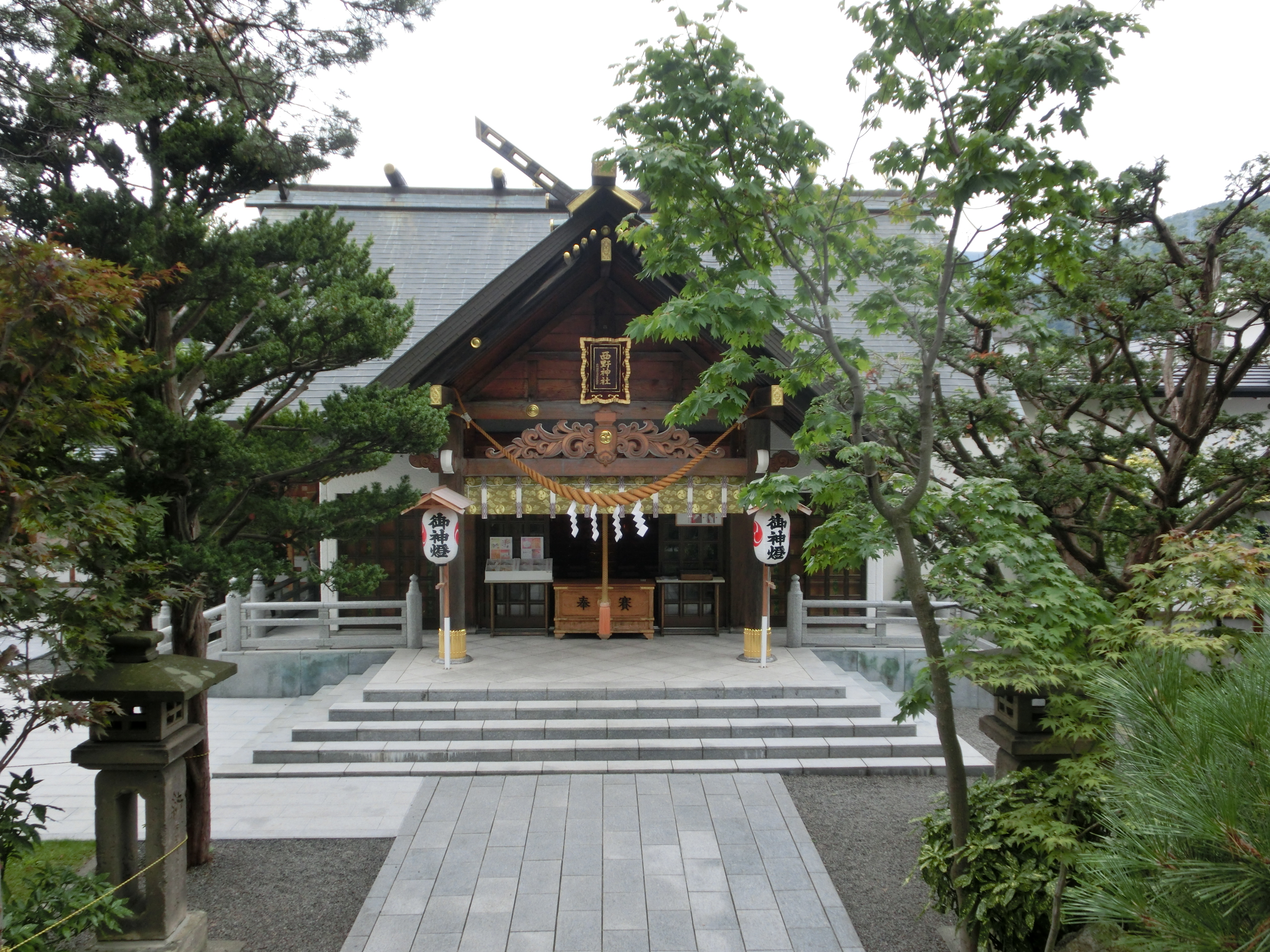Nishino Shrine on:
[Wikipedia]
[Google]
[Amazon]
 Nishino Shrine (西野神社, ''Nishino jinja'') is a
Nishino Shrine (西野神社, ''Nishino jinja'') is a
Official websiteHokkaido Shinto listing
Shinto shrines in Hokkaido Pet shrines {{Shinto-stub
Shinto
Shinto () is a religion from Japan. Classified as an East Asian religion by scholars of religion, its practitioners often regard it as Japan's indigenous religion and as a nature religion. Scholars sometimes call its practitioners ''Shintois ...
shrine located in Sapporo, Hokkaido
( ain, サッ・ポロ・ペッ, Satporopet, lit=Dry, Great River) is a city in Japan. It is the largest city north of Tokyo and the largest city on Hokkaido, the northernmost main island of the country. It ranks as the fifth most populous city ...
. It was established in 1885, and enshrines the kami
are the deities, divinities, spirits, phenomena or "holy powers", that are venerated in the Shinto religion. They can be elements of the landscape, forces of nature, or beings and the qualities that these beings express; they can also be the sp ...
Toyotama-hime
or Luxuriant-Jewel-Princess is a goddess in Japanese mythology in the episode of the "Luck of the Sea and the Luck of the Mountain" in the '' Kojiki'' as well as '' Nihon Shoki''. She is the daughter of the sea deity, Watatsumi.
Toyotama marrie ...
(豊玉姫命), Ugayafukiaezu
is a Shinto ''kami'', and is in Japanese mythology, the father of Japan's first Emperor, Emperor Jimmu.
Nomenclature and story
In the ''Kojiki'', his name appears as , and in the '' Nihon Shoki'' as . Basil Hall Chamberlain glossed the ''Kojik ...
no mikoto (鵜草葺不合命), and Emperor Ōjin as Hondawake no mikoto (譽田別命). The shrine is constructed in the Shinmei-zukuri
is an ancient Japanese architectural style typical of Ise Grand Shrine's ''honden'', the holiest of Shinto shrines.Encyclopedia of Shinto It is most common in Mie Prefecture.JAANUS
History
Ancient shrines were constructed according to the style ...
architectural style.
See also
* List of Shinto shrines in HokkaidōExternal links
Official website
Shinto shrines in Hokkaido Pet shrines {{Shinto-stub